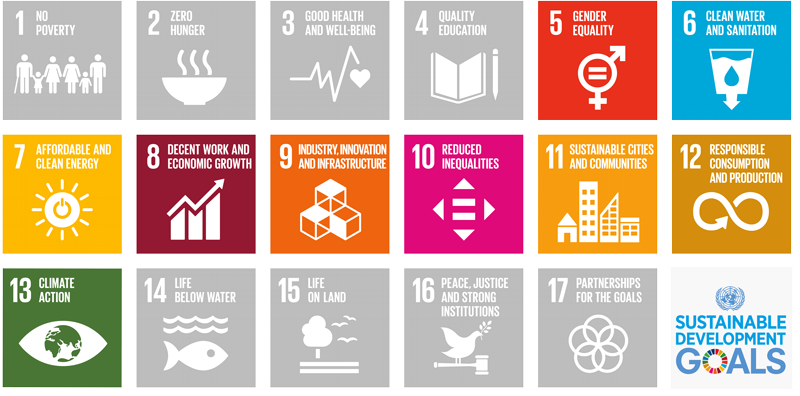Assurance and disclosures
Introduction
Our policies and procedures for environmental and social issues continued to deliver a high standard of assurance through robust due diligence and effective project monitoring. By issuing green and social bonds, we seek to establish harmonised best practices for this market and finance projects that achieve specific environmental benefits. We prioritise health and safety, and have a rigorous investigation process for investigating complaints about our projects.
The Bank’s policies
All projects are appraised against the Bank’s Environmental and Social Policy and Performance Requirements. The project’s size, location and potential environmental and social impacts are all taken into account.
If an appraisal reveals a project would not be fully compliant with our requirements, the EBRD will agree an Environmental and Social Action Plan (ESAP) with the client to bring the project up to the required standards, within a reasonable timeframe. If this is not possible but there are compensating environmental or social benefits, the EBRD’s Board may approve derogations from specific parts of the Performance Requirements. Any approved derogations are detailed in this report.
Operational results in 2018
The environmental and social category – A, B, C or FI (Financial Intermediary) – reflects the potential impacts associated with a project and determines the nature of the environmental and social appraisal, information disclosure and stakeholder engagement required.
- Category A projects: those with potentially significant and diverse environmental and social impacts, requiring a detailed participatory assessment process
- Category B projects: those with environmental and social impacts that are site-specific and which can be readily assessed and managed
- Category C projects: those that are expected to result in minimal adverse environmental or social impacts
- Category FI projects: transactions that involve the provision of financing to a financial intermediary – typically a bank or a fund – which are required to adopt and implement procedures to manage their environmental and social risks.
| Environmental and Social category | € millions | % by volume | Number of projects | % by number of projects |
|---|---|---|---|---|
| Category A | 1,388 | 15.2% | 10 | 2.3% |
| Category B | 4,377 | 48.0% | 191 | 44.4% |
| Category C | 79 | 0.9% | 6 | 1.4% |
| Category FI | 3,276 | 35.9% | 223 | 51.9% |
GET assurance process
Introduction
The green transition quality is embedded within our Green Economy Transition (GET) approach. Systems and processes are in place to verify, assess and report on the green impacts of our GET projects.
We have developed a “green index” to quantify how EBRD economies perform in respect to the green transition quality. The index uses physical indicators which reflect environmental performance (for example, current and projected water stress) and structural indicators which reflect the regulatory or market response to the problem (for example, water pricing). It is used to prioritise areas for policy engagement and investments.
The GET Transition Impact (TI) Assessment Methodology was launched in 2017. It assesses the expected transition impact of green projects and project components. GET investments fall into three categories: climate change mitigation, climate change adaptation and other environmental areas.
Green activities are determined according to internationally agreed definitions, the systematic impact achieved, the level of innovation associated with the investment and the presence of complementary policy engagement. All investments are reviewed by a “clearing house” comprising environmental, climate and economic experts, who advise on whether the proposed project meets the requirements of the GET initiative.
Transparency
We have developed a handbook which provides guidance on the attributes and standards required for a project to sit within the GET approach. We are also providing more information on projects that are categorised as GET. In 2017 we began disclosing projects with a climate component of more than €40 million. In 2019 this disclosure is to be expanded to include all projects with a climate component.
Task Force on Climate-related Financial Disclosures (TCFD)
Introduction
The recommendations of the Financial Stability Board’s Task Force on Climate-related Financial Disclosures (TCFD) were released in July 2017. Since then they have been rapidly adopted as good practice for transparency in relation to climate-related risks and opportunities, and for climate-related corporate governance more broadly, by more than 500 organisations.
Recognising the relevance of the TCFD recommendations, in May 2018 the EBRD became the first MDB to become a TCFD supporter. Thanks to our strong track record on climate action over the past two decades, the Bank is already performing a number of key elements of the TCFD recommendations that will continue to be updated in light of the EBRD’s focus on the 2015 Paris Agreement, as well as evolving best market practices.
The latter are set out below in line with the four TCFD recommendations: governance, strategy, risk management and metrics.
Governance
The Bank’s Environmental and Social Policy (ESP), which is approved by the Board, provides a comprehensive framework for ensuring high environmental and social standards, covering not only the EBRD’s lending operations but also its own internal operations.
In addition, the EBRD’s Board is routinely appraised of climate-related risks and opportunities at the project level through the inclusion of relevant information (for example, GHG emissions, climate resilience considerations), in line with our GET approach.
Strategy
Climate-related considerations, including risks and opportunities associated with both climate change mitigation and adaptation, are clearly articulated in our GET strategy. This is the cornerstone of the EBRD’s climate action and provides a framework for our extensive investments in support of climate change mitigation and climate change adaptation as well as other environmental objectives. We also provide technical assistance and conduct policy engagement to deepen the climate impact of our operations.
We are also considering how to build on this strategic approach in line with the 2015 Paris Agreement, in order to align our business operations with low-carbon and climate-resilience development pathways. In addition, we are actively engaged with and support a number of major external processes that are shaping the wider strategic context for financing the climate or green economy transition, such as the European Union Sustainable Finance Approach and the Network for Greening the Financial System (NGFS) and the Green Bond Principles.
EBRD’s Energy Strategy for the period 2019-2023 was published in December 2018. The strategy has the following aims:
- Decarbonise the power sector with a decisive shift away from the most polluting fuels
- Scaling-up the share of renewable energy sources while supporting the integration of intermittent renewables
- Supporting the interlinkages between different sectors of the economy through smart, flexible, diverse, integrated and resilient networks
- Relying on competitive, regionally integrated and resilient markets to deliver this change.
The strategy confirms that the Bank will no longer finance thermal coal mining or coal-fired electricity generation. The EBRD will also stop funding any upstream oil exploration, and will not finance upstream oil development projects except in rare and exceptional circumstances, where such investments reduce greenhouse gas emissions.
Risk management
The EBRD has developed and implemented an organisational structure which has allowed it to scale-up its climate-related activities significantly over the past 10 years, and which have been supported by the adoption of the GET approach. This covers not only the assessment and management of climate-related risks (both carbon transition and physical climate), but also the corresponding opportunities associated with the identification and management of those risks.
Key elements of this structure include:
- the definition of a specific product range designed to respond to client demand across sectors and countries
- tight integration of banking, technical, policy and capacity-building work
- specialised climate expertise in a central team charting strategic development and driving innovation
- “mainstreaming” of climate activity across sector and country teams
- cross-departmental collaboration including banking, policy, environmental and social, treasury and legal departments to leverage the full range of the EBRD’s internal expertise and skills
- development of climate finance and policy capacity in Resident Offices in selected economies where the EBRD invests.
In addition, the EBRD has several compliance and accountability functions that cover environmental issues. These are Internal Audit; Evaluation, which looks at project outcomes and lessons learned; and the Project Complaints Mechanism, which independently assesses complaints relating to the Environmental and Social Policy. In addition, the Bank has recently adopted a comprehensive approach to carbon pricing that is being applied across our operations from 2019 onwards.
Metrics
Under the GET approach the EBRD has developed a specific monitoring, reporting and verification (MRV) system to:
- identify the climate-related component of each project in accordance with a set of precise internal standards
- quantify the financing which can be directly related to the climate-related project component
- set up the baseline scenario to assess the impact of the project after implementation
- estimate the impact of its operations.
More recently, we have developed and implemented a comprehensive climate resilience MRV approach (as part of our wider GET MRV approach) in which GET adaptation finance is systematically and consistently tracked, together with the specific and measurable climate resilience outcomes (or climate resilience benefit) that each project is expected to deliver. This feeds a dedicated management information system to track the overall impact of the EBRD’s activity including GHG emission reductions and climate resilience benefits. This MRV provides detailed information on the climate finance activity of the EBRD and is closely integrated in our operational data systems to ensure data integrity and consistency. The MRV system also provides detailed information to individual banking teams to support their results’ management in this area.
The data produced by the MRV system contributes annually to the joint MDB climate finance report, building on the close collaboration across MDBs to define common standards and reporting practices.
Green, Social and Sustainability Bonds
Introduction
Harnessing financial support from global investors and capital markets is essential to achieving the Sustainable Development Goals (SDGs) and improving people’s daily lives. Financial market practices reflect this, with the emergence of impact investing and the increasing use of, for example, Green Bonds. These bonds – whose proceeds exclusively go to projects with clear environmental benefits – are gaining global recognition for enabling debt issuers to finance projects that transition their business towards greater environmental stability.
As an issuer of Green and Social Bonds, and together with other MDBs, we seek to establish harmonised best practices for this market. We support the Green Bond Principles (GBP), which provide voluntary process guidelines developed by a broad forum of market participants under the secretariat of the International Capital Market Association. Both our Environmental Sustainability Bonds and Social Bonds are aligned with the GBP and Social Bond Principles (SBP), respectively. The EBRD has been a member of the GBP since its inception in 2014 and we are currently serving on the GBP SBP Executive Committee and on various working groups.
EBRD Green and Social bond issuance
As at 31 December 2018, the EBRD had issued 73 green bonds totalling €2.58 billion. Our Environmental Sustainability Bond Programme (ESBP) responds to clear investor demand for this type of product from a new investor base. The projects it finances achieve specific and meaningful environmental benefits and allow us to highlight the importance we place on environmentally sound and sustainable development while fulfilling core elements of our mandate. Collectively, our ESBP finances our Green Project Portfolio (GPP) which is based on clear selection and exclusion criteria that are subject to regular review by the EBRD’s experts. Many socially responsible investors also purchase our generic bonds as these too support our regions to implement the SDGs.

| Total volume of Green Bonds issued since 2010 | EUR 2.58 bn |
| Number of Green Bonds issued since 2010 | 73 |
| Total volume of Green Bonds issued in 2018 | EUR 225 mn |
| Currencies of Green Bonds issued in 2018 | SEK (52%), EUR (42%), USD (4%), RUB (2%) |
| Total Green Bond issuance outstanding as at 31 December 2018 | EUR 1.62 bn |
In addition to our ESBP, we have issued Social Bonds since 2010. The EBRD Microfinance Bond is a use-of-proceeds bond that funds a selected microfinance portfolio of €1 billion with an average individual loan size of below €5,000 (as at the first half of 2018). In 2018, we issued our inaugural Health Bond which finances projects that seek to improve access to, and the quality of health services and pharmaceutical products.
| Total volume of Social Bonds issued since 2010 | EUR 249 mn |
| Number of Social Bonds issued since 2010 | 3 |
| Total volume of Social Bonds issued in 2018 | EUR 97 mn |
| Currencies of Social Bonds issued in 2018 | PLN (100%) |
| Total Social Bond issuance outstanding as at 31 December 2018 | EUR 173 mn |
“The term “Green Bond” is a term used by the market for a green bond that is issued in conformity with the Green Bond Principles. Likewise, a Sustainability Bond is issued in conformity with the Green Bond and Social Bond Principles.”
Dai-ichi Life becomes sole investor in first issuance for PLN 317 million
In 2018 we successfully placed our inaugural health bond. The proceeds of this note issuance will be used to finance EBRD health projects such as the construction or expansion of medical centres and improvements in access to, and standards of, pharmaceutical products.
Green Project Portfolio summary
Introduction
We seek to ensure that the disbursed amount under the GPP exceeds our total Green Bond issuance outstanding. The GPP is a replenishing portfolio with strict eligibility criteria (see table below) that ensures the proceeds of our Green Bonds are immediately directed towards projects with positive environmental impacts.
| Total operating assets as at 31 December 2018 | €8.0 billion |
| Total undisbursed commitments as at 31 December 2018 | €3.75 billion |
| Number of projects | 378 |
| Weighted average remaining life | 10.22 years |
| Weighted average tenor | 12.93 years |
| Weighted average age of the energy projects from signing as at 31 December 2018 | 2.5 years |
| Weighted average age of the infrastructure projects from signing as at 31 December 2018 | 2.9 years |
| Total committed amounts approved in 2018 | €1,433 million |
| Total of new operating assets approved in 2018 | €468 million |
| Total of undisbursed commitments approved in 2018 | €695 million |
Social Project Portfolio summary
Introduction
Our Microfinance and Health Bonds issuance is directly linked to the disbursed amount of the respective Microfinance Portfolio (MFP) and Health Portfolio (HP).
Key figures
| Total operating assets as at 30 June 2018 | €1.05 billion |
| Number of projects | 181 |
| Weighted average remaining life | 3.3 years |
| Weighted average tenor | 5.3 years |
| Total operating assets as at 31 December 2018 | €77.5 million |
| Total undisbursed commitments as at 31 December 2018 | €2 million |
| Number of projects | 14 |
| Weighted average remaining life | 4.7 years |
| Weighted average tenor | 6.9 years |
| Weighted average age of the HPP from signing as at 31 December 2018 | 2.3 years |
| Total committed amounts approved in 2018 | €22.3 million |
| Total of new operating assets approved in 2018 | €20.3 million |
| Total of undisbursed commitments approved in 2018 | €2 million |
Impact and outcome reporting of EBRD’s Green and Social Bonds
Environmental Sustainability Bond Programme (ESBP)
Renewable energy and energy efficiency in the GPP
Renewable energy (RE) and energy efficiency (EE) projects account for 77.3 per cent of the GPP. The projects assessed are expected to have achieved a GHG reduction of 12.7 million tonnes of CO2 equivalent (CO2e) each year. Based on the EBRD’s share of funding of the projects, the GHG savings attributable to EBRD finance is estimated to be 5.3 million CO2e.
RE capacity installed amounted to 3.5 GW and the associated GHG savings amounted to 7.5 million tonnes of CO2 equivalent (CO2e) each year (1.2 GW and 2.5 million tonnes CO2e based on the EBRD’s share of funding).
Note that because of the criteria applied to the GPP, not all of the EBRD’s RE and EE investments are included. Investment amounts and CO2 savings for the GPP are consequently lower than those for the EBRD’s overall investments in these sectors.
Sustainable resource projects in the GPP
Sustainable resource projects, which include water, waste and sustainable transport projects, account for 22.7 per cent of the GPP. These investments are expected to benefit a total of 21.85 million people (11.70 million based on the EBRD’s share of funding) in the EBRD regions by providing them with improved water services, district heating and solid waste facilities.
The water projects are expected to annually save 206 million m3 of water and treat 128 million m3 of wastewater (134 million and 49 million m3 of water and wastewater respectively based on the EBRD’s share of funding).
The waste management projects are expected to help manage 3.4 million tonnes of waste annually (1.6 million tonnes based on the EBRD’s share of funding). Sustainable waste management includes waste minimisation, recovery, recycling and re-use.
The transportation projects are expected to reduce the levels of air pollutants: particulate matter (PM) is expected to reduce by 19 tonnes per year (10 tonnes based on the EBRD’s funding) and the nitrogen oxides (NOx) by 455 tonnes per year (351 tonnes pro rata).
Note that because of the criteria applied to the GPP, not all of the EBRD’s water, waste and sustainable transport investments are included. Investment amounts and project benefits for the GPP are consequently lower than those for the Bank’s overall investments in these sectors.
| Total 2014-18 | ‘000 | Relative to TPV 2014-18 | ‘000 | ||
|---|---|---|---|---|---|
| Total population benefitting from improved solid waste management services. | 10,045 | 46% | Total population benefitting from improved solid waste management services. | 5,869 | 50% |
| Total population benefitting from improved access to tap water. | 4,108 | 19% | Total population benefitting from improved access to tap water. | 2,597 | 22% |
| Total population benefitting from improved access to wastewater services. | 3,436 | 16% | Total population benefitting from improved access to wastewater services. | 1,465 | 13% |
| Total population benefitting from improved district heating. | 4,265 | 20% | Total population benefitting from improved district heating. | 1,764 | 15% |
| Total | 21,854 | Total | 11,696 |
| Sum of Projected impact by completion (‘000) | Sum of Pro rata | |
|---|---|---|
| KAZAKHSTAN | 4,317 | 1,718 |
| JORDAN | 4,083 | 1,412 |
| GEORGIA | 2,700 | 2,433 |
| ARMENIA | 1,530 | 418 |
| ROMANIA | 1,481 | 88 |
| EGYPT | 1,410 | 430 |
| MONGOLIA | 1,400 | 914 |
| UKRAINE | 929 | 518 |
| BOSNIA AND HERZEGOVINA | 780 | 299 |
| OTHER | 3,223 | 2,140 |
| Sum of Fac Water Savings (thousand m3/year) | Sum of Water saved pro rata | Sum of Number of projects |
|
|---|---|---|---|
| KAZAKHSTAN | 120,092.00 | 103,885.00 | 13 |
| ROMANIA | 30,277.00 | 1,776.00 | 26 |
| BOSNIA AND HERZEGOVINA | 25,315.00 | 10,257.00 | 5 |
| UZBEKISTAN | 12,333.00 | 10,277.00 | 2 |
| MOROCCO | 11,200.00 | 3,391.00 | 2 |
| OTHER | 7,115.00 | 4,344.00 | 27.00 |
| Row Labels | Sum of Wastewater treated volume (thousand m3/year) | Sum of Wastewater treated pro rata | Sum of Number of projects |
|---|---|---|---|
| EGYPT | 91,250.00 | 27,905.00 | 7 |
| BELARUS | 26,768.00 | 17,939.00 | 6 |
| KAZAKHSTAN | 7,709.00 | 1,844.00 | 13 |
| JORDAN | 2,156.00 | 1,024.00 | 3 |
Social Bond Programme – Health Portfolio
| The 14 Projects includes Hospitals (5), Diagnostic Imaging Centres (2), Pharmaceutical Manufacturing (4), Pharma Wholesaling (2) and Retail Pharmacies (1). |
| 7 projects, accounting for 23% of the portfolio, involve the construction of 6 new facilities, including new hospitals, an oncology centre, a centralised laboratory facility and a diagnostic imaging chain. |
| The Centralized Lab project is an example of a new model of providing laboratory services outside the hospital and is intended to allow for new types of diagnostic tests not currently available in the local market |
| > The Diagnostic Imaging chain will bring increased access to new medical technologies (e.g. MRI, CT) to the market where there is a undersupply of imaging equipment |
| > All health care projects seek to increase standards above the prevailing standards in the market. 3 projects target Joint Commission internal accreditation, the premier international standard, of which 1 hospital (IM Centre) has already received this accreditation with EBRD TC support. |
| 7 projects, accounting for 77% of the portfolio are related to pharmaceutical manufacturing, wholesaling and retail pharmacies |
| > All 4 projects in pharmaceutical manufacturing entail supporting Good Manufacturing Practice (GMP) standards. |
| > The pharmaceutical wholesaling projects include support for working capital financing and one of the projects for a new pharmaceutical warehouse |
| > The retail pharmacy chain included support for expansion of 160 retail pharmacies. |
Impact indicators are typically based on a number of assumptions. While technical experts aim to use sound and conservative assumptions, based on the information available at the time, the actual environmental impact of the projects may diverge from initial projections.
Caution should be taken in comparing projects, sectors or whole portfolios because baselines (and base years) and calculation methods may vary.
Projects will have a wider range of impacts than are captured by the indicators presented in this report. While the EBRD makes efforts to improve the consistency and availability of reported metrics over time, projects cover a wide range of sectors and sub-sectors making complete harmonisation of reporting metrics challenging. In some cases numbers have been rounded for ease of presentation.
EBRD Green and Sustainability Bond investments and technical support
Introduction
While the global market for Green Bonds has grown rapidly in recent years, exceeding US$ 167 billion of issuance in 2018 (source: CBI preliminary estimate), large regional gaps remain with only approximately 2 per cent of global issuance volume coming from our regions. The Bank has been leading efforts to increase the market’s scale and we note increasing calls from potential issuers for the EBRD’s involvement as investor and technical assistance provider for pilot issuance.
The Bank has also established a dedicated technical cooperation programme to accelerate GBP-aligned Green and Sustainability Bond issuances in the EBRD regions. The key objective of this programme is to assist existing and potential clients of the EBRD in identifying gaps in their internal capacity and processes that need to be addressed in order for them to be able to issue Theme Bonds.

Green and Sustainability Bond Framework for Financial Institutions
In September 2018, we approved a €250 million direct investment framework for Green and Sustainability Bonds issued by financial institutions. Over the next three years, we anticipate the framework will mobilise private sector capital investments of a further €1 billion, and hope to double the supply of such bonds issued by financial institutions across the regions where the EBRD invests.

Amundi Planet
In 2018, we completed a US$ 68.5 million investment in Amundi Planet – Emerging Green One, the world’s largest Green Bond fund and the first dedicated to emerging markets, including the EBRD regions. In parallel with this investment, we also launched a dedicated Green Bond technical cooperation programme across our regions to help increase the issuance of Green Bonds to finance environmentally friendly projects.
| Performance Requirement* | % of projects |
|---|---|
| PR1: Assessment and Management of Environmental and Social Impacts and Issues | 85% |
| PR2: Labour and Working Conditions | 85% |
| PR3: Resource Efficiency and Pollution Prevention Control | 83% |
| PR4: Health and Safety | 85% |
| PR5: Land Acquisition and Involuntary Resettlement and Economic Displacement | 17% |
| PR6: Biodiversity Conservation and Sustainable Management of Living Natural Resources | 35% |
| PR7: Indigenous Peoples | 0% |
| PR8: Cultural Heritage | 16% |
| PR10: Information Disclosure and Stakeholder Engagement | 83% |
* PR9 applies only to investments made through Financial Intermediaries. These are monitored separately via the FI Sustainability Index.
Measuring and monitoring performance
Introduction
The environmental and social performance of all EBRD projects is closely monitored throughout the investment cycle. This involves a combination of client reporting, regular site visits by Bank staff and independent audits.
We require each of our clients to provide us with a report – at least annually – on their environmental and social performance and the implementation of applicable Environmental and Social Action Plans (ESAPs). A lack of environmental and social reporting by a client is usually a signal to the Bank that they need assistance. So we step in with enhanced monitoring. This usually leads to more frequent site visits or assistance with capacity-building initiatives.
Project Performance Indicators
The EBRD has introduced a system of performance indicators for direct investment projects. This system assesses and monitors project compliance with the Bank’s environmental and social Performance Requirements (PRs) over time. The objectives of this work are:
- more accountability
- improved management of resources
- enhanced reporting.
Compliance with the main components of each PR is scored for each project at the time of appraisal. These scores are combined to give an overall performance rating for each project on a five-point scale. Projects are rated based on current performance, that is, before the implementation of any future commitments under an Environmental and Social Action Plan (ESAP). By tracking projects over time, we aim to be able to demonstrate changes in performance as EBRD investments and associated ESAPs are implemented.
2018 was the third full year that the system has been in operation. The chart below shows the spread of ratings for projects signed last year and the table shows the percentage of applicable projects that have been subject to this new system that have triggered each of the PRs.
Greenhouse gas (GHG) assessment for 2018
Introduction
Our GHG Assessment provides an estimate of the net carbon footprint that will result from EBRD-financed projects signed during a representative year, once the projects are fully implemented.
The calculation is based on estimated emission reductions from climate mitigation projects and estimates of “new” GHG emissions from projects that involve new building or expanding capacity.
Key figures
The EBRD has published GHG estimates for its signed projects every year since 2002. GHG data for the project assessments come from a variety of sources, including environmental impact assessments (EIAs), energy audits and, in some cases, calculations carried out by our engineers. Find out more about our GHG reporting and how we assess it here.
| Category | Number of investments above significance threshold | GHG impact compared with the baseline scenario (ktCO2e per year) |
|---|---|---|
| Total | 38 | 3,038 |
| Renewable energy | 13 | -1,059 |
| Energy efficiency | 17 | -1,639 |
| Climate mitigation funds and credit line | 1 | -40 |
| Public transport | 2 | -195 |
| Waste and wastewater | 3 | -433 |
| Greenfield (new build) | 2 | 330 |
2018 marks the 13th consecutive year in which our investments have been forecast to deliver aggregate GHG savings.
A large part of the emission reductions are the result of investments in renewable energy and energy efficiency. The projects that will lead to significant GHG emission increases are gas pipeline projects. The emissions increases relate to the operation of the project, principally from the compressors that pump the gas along the pipeline.
2018 highlights
Development of an economic assessment methodology for projects with high GHG emissions
2018 was a remarkable year for the Bank as it made a corporate commitment to include a mandatory economic assessment for projects with high GHG emissions.
Starting from January 2019, the Bank will undertake a mandatory economic assessment of project finance and corporate finance with known use of proceeds. The economic assessment will apply to projects with annual GHG emissions which either increase net emissions by 25,000 metric tonnes per year relative to a baseline or increase gross emissions by 100,000 metric tonnes per year in absolute terms. Where applied, it will be an additional piece of information for EBRD management when considering an investment.
An important part of this economic assessment is the use of a shadow carbon price. Carbon pricing can be part of the policy package to achieve these goals. A “shadow” carbon price seeks to put a monetary value on GHG emissions and corrects for the market failure associated in the absence of carbon markets or equivalent tools (for example, a carbon tax). This is particularly important in instances where although there has been substantial progress in recent years, carbon prices remain limited or non-existent in many of the economies where the EBRD invests.
For the shadow carbon prices the EBRD will use the high and low values from the range of prices recommended by The High Level Commission on Carbon Prices.

Smart grid development in Poland
We provided a loan of up to €95 million to the electricity utility company to support a smart grid project that included construction of new lines for connecting renewable energy sources, and upgrading and extending the distribution network. In 2018, following completion of the project, the client reported that its distribution losses were reduced by around 4.2 per cent, equivalent to a reduction of 1 TWh in electricity losses. The project implementation has resulted in almost 44 per cent more loss reduction compared with the EBRD’s pre-investment estimate.
Kazakh railway operator to improve energy efficiency with EBRD loan
In 2013, the Bank committed US$ 40 million for a project with a railway operator in Kazakhstan aimed at improving energy efficiency in non-traction operations. In 2015, the loan amount was reduced to US$ 9.55 million and the scope of the project was changed as the borrower decided to use the financing for efficient lighting investments only. This meant both a smaller investment programme and electricity savings of 19 percent less than had been initially planned, changes which created over-estimates of the ex ante electricity and CO2 savings value.
Greenhouse gas assessment –
ex post monitoring
Introduction
The EBRD assesses and reports project-related GHG emissions and savings. These assessments are normally ex ante, compiled using robust estimates of how a project will perform once it is fully implemented. As part of our project monitoring we also collect actual impact data which we can compare with ex ante pre-investment estimates. This monitoring process allows us to:
- monitor technical and operational capacities, systems and finances
- verify assumptions that went into the ex ante estimates and compare these with achieved savings
- strengthen current estimates and assumptions used to make ex ante
The Green Climate Fund (GCF), Global Environment Facility and Clean Technology Fund, which help support the EBRD’s climate investment also require us to report ex post data annually, including emissions reductions achieved.
Key figures
Ex post monitoring is undertaken for a selection of EBRD projects that have significant CO2 emissions and/or emission reduction potential.
- Cumulatively, renewable energy and energy efficiency projects financed by the EBRD between 2006 and 2017 are estimated to lead to 90 million tonnes of CO2
- From our portfolio, 41 per cent of projects contribute 95 per cent of reported emission savings, of which around a quarter have been subject to enhanced ex post
About half of the projects reviewed have progressed in line with our ex ante forecasts. Some have produced results that have exceeded our original estimates, while others have under-performed expectations. The net effect of these variations in outcomes is to produce an overall result at the portfolio level that is closer to the ex ante estimates. Financial or operational changes, delays in implementation or overly optimistic ex ante assumptions can result in material differences of outcomes. These instances are more likely to happen in energy efficiency and transport projects which contain a wider assumption scale than more straightforward projects such as renewable energy or electricity transmission and distribution.
The case studies below highlight how ex post monitoring can help us evaluate which types of projects need more resources to generate more robust results. As we gain more experience from this monitoring work, we will aim to revise our methodologies and improve the assumptions that underpin our pre-investment estimates.
Financial intermediaries
Introduction
We ensure that all financial institutions receiving our financing have appropriate environmental and social risk management systems in place. Our requirements for these financial intermediary (FI) projects are set out in PR9 of our Environmental and Social Policy (ESP).
Sustainability Index
Our online Financial Intermediary Sustainability Index (SI) allows us to monitor the environmental and social (E&S) risk management performance of individual FIs and the entire portfolio. By the end of 2018, over 240 partner financial institutions had been provided with access to the SI.
We regularly review usage of the Index, asking participating FIs for feedback and insight into the sustainability issues they are facing. By October 2018, we had reviewed 115 completed responses.
In line with previous reviews, FIs continued to see a growth in the influence of sustainability issues in the last three years. Levels of endorsement for international collaborations with, among others, the UN Universal Declaration on Human Rights, the UNEP Financial Initiative, UN Global Compact, Smart Campaign and IFC Performance Standards, are broadly similar to previous reporting periods.
Training and capacity-building
Environmental and social risk management is good practice in the financial sector. We rely on the financial institutions in the economies where we invest to implement our performance requirements, which gives them substantial E&S management responsibility.
We have been training our financial intermediaries in this area since 1991. During 2018, various one-day E&S due diligence training workshops were delivered to the following partner FIs:
- in Ukraine, five FIs involved in our risk sharing frameworks
- in Tunisia, UBCI, QNB, CIL, UIB and a number of micro-credit providers
- specific workshops for EHSS risks associated with the Trade Finance Programme were provided for more than 25 clients at two sessions in Vienna and Tbilisi.
The Bank’s E&S e-learning programme for FIs continues to be accessed by partner banks and private equity houses, with 244 new users added in 2018. Our experience shows that FIs who receive E&S monitoring visits from the EBRD have a better understanding of the methods and benefits of implementation of procedures and much higher confidence in decision-making on environmental and social actions.
In 2018 EBRD staff undertook monitoring visits to the aforementioned Tunisian and Ukrainian entities and visits were also undertaken to XacBank and a number of non-bank financial institutions in Mongolia.
projects in 2018
Health and safety
Introduction
Our portfolio involves tens of thousands of people, including employees and contractors, who work across about 1,500 projects at any one time. Millions of customers and end-users also benefit from our projects. One of our top priorities is ensuring the health and safety of workers and communities and eliminating or minimising any risk associated with the work we do.
As part of our due diligence, all EBRD-financed projects are held to high health and safety standards. Our clients are required to notify us of any serious incidents and fatalities and we monitor trends across our portfolio and take prompt and effective action where necessary.
Key figures
In 2018, we received reports of serious incidents from 24 clients, which sadly resulted in 75 fatalities overall. Of these, 50 occurred in 2018 – the other 25 were related to figures from previous years that were late in being reported. The 2018 figures compared with 45 fatalities recorded in 2017, but we have followed a general reduction in fatal accidents over the past five years. The main causes of fatalities among workers and members of the public in 2018 were vehicle collisions (18 reported); electrocutions (13 reported); single train collisions (10 reported); and falling from a height (8 reported).
2018 highlights
The EBRD’s involvement in various activities and awareness-raising events has helped to influence policy and standards in many of the economies where we invest.
Electrocutions continue to be one of the top causes of fatal accidents reported by the Bank (14 per cent in 2018 down from 24 per cent in 2017). To support our clients with managing this risk, we provided IOSH Managing Safely training to senior managers and safety specialists at KTZ Rail in Kazakhstan and supported a study tour for EPS from Serbia to visit counterparts in the power and energy sector in Greece. We also engaged with ELDER in Turkey to undertake a detailed root cause analysis of worker accidents in the Turkish electrical distribution sector.
As part of our backing for the UN Decade of Action for Road Safety, the EBRD supported an intensive media campaign in Dushanbe, Tajikistan, which saw seatbelt use for car drivers increase from 22.5 per cent in July 2017 to 36.0 per cent in April 2018. The overall seatbelt wearing rate for all car occupants, including passengers, also increased from 12.9 per cent in July 2017 to 21.0 per cent in April 2018. We have been supporting a similar campaign in Bishkek, Kyrgyz Republic, since November 2018 and also took over the chair of the MDB Road Safety Working Group in early 2018.
Between 2013 and 2018, we mobilised €3.2 million from the EBRD Shareholder Special Fund for road, occupational health and safety activities, from appraisals to capacity-building for clients in higher-risk sectors. We spent €1.2 million on these activities in 2018.
We are fully committed to protecting and promoting health and safety within our investments and set out our expectations within PR4 of our Environmental and Social Policy (2014).
Project Complaint Mechanism
Introduction
Our Project Complaint Mechanism (PCM) is the EBRD’s accountability tool established to assess and review complaints about projects we finance. It offers individuals and local groups that may be directly or adversely affected by a project, as well as CSOs, a means of raising complaints or grievances with the Bank, independently from banking operations.
Key figures
In 2018, the PCM registered 10 new complaints and continued working on different stages of Compliance Review and Problem-Solving for eight additional, ongoing complaints.
PCM has been monitoring the implementation of Management Action Plans and has issued bi-annual Compliance Review Monitoring Reports in relation to six complaints. Five complaints were found to be ineligible for further processing by the PCM and were closed in 2018. An additional four complaints that were under monitoring stage were closed in 2018. One complaint was closed after no findings of non-compliance and another was closed after the finalisation of a Problem-Solving Initiative.
The PCM also conducted outreach workshops with CSOs in Ulaanbaatar, Amman and Washington, in partnership with other IFIs. Capacity-building activities in the area of problem-solving were also held throughout the year in various of the economies where the EBRD invests.
Details of all complaints and reports, together with PCM Annual Reports, are available on the PCM website.



